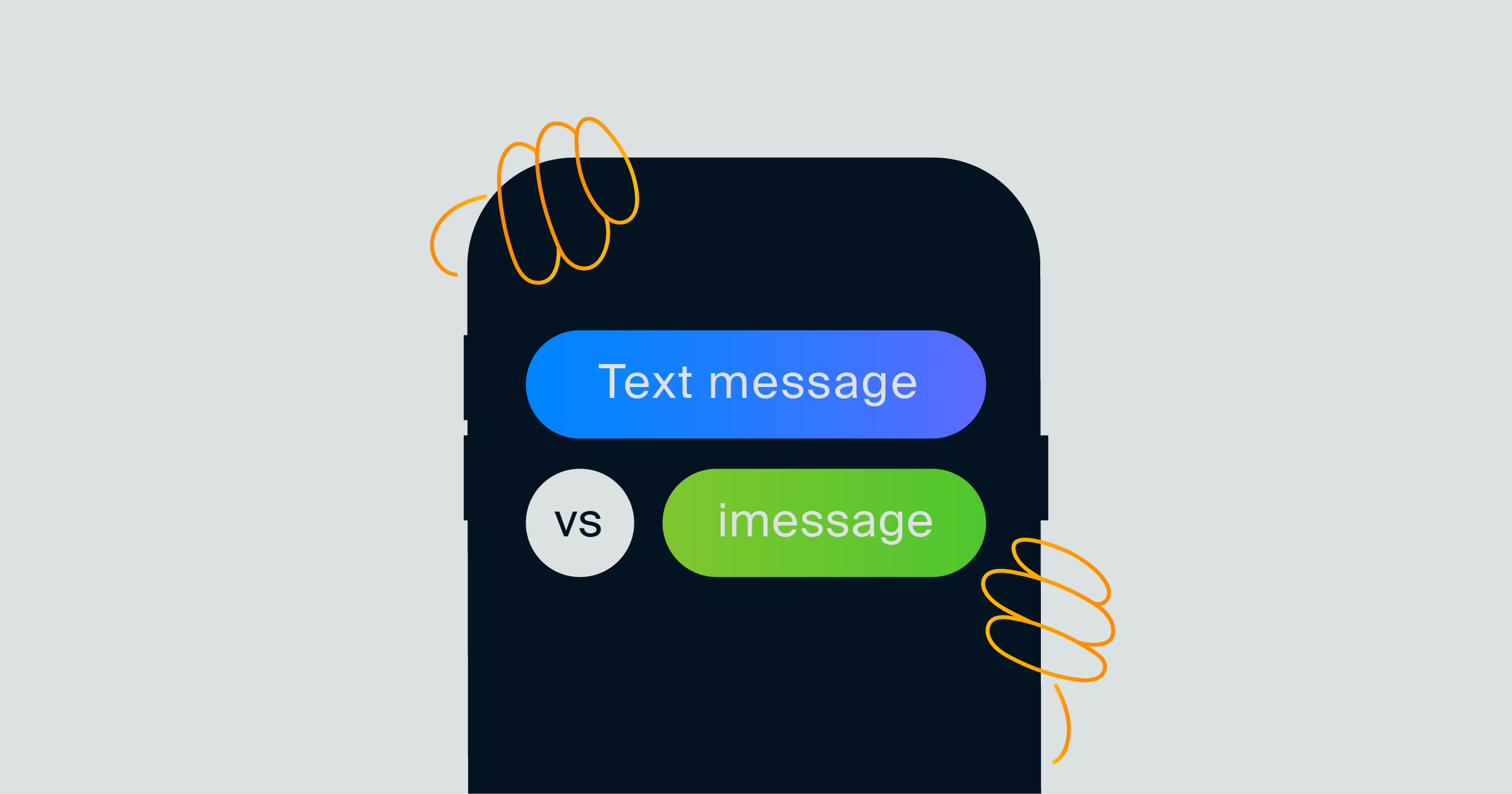SMS vs. iMessage: Which One Is Better for Businesses
Published: Sep 14, 2021
Updated: May 10, 2022

In this ever-changing world of business communication, the choice of business messaging platform will be the top contributor to your customer engagement.
Although the companies are struggling to do better with their audiences, confusion arises between SMS and iMessage.
Even though SMS comes with the core competency of being available to every mobile user, iMessage is feature-rich and only available to Apple users.
This blog post explores the distinct advantages and considerations of both SMS and iMessage, helping businesses decide on the most fitting platform to enhance their communication strategy.
By understanding the unique benefits of each, companies can drive meaningful interactions with their customers.
Understanding Text Messaging
Text messaging is the act of sending a message over a cellular network—like SMS and MMS—requiring no WiFi or a data plan.
The message is transmitted as a binary code from one cell tower to another.
Since text messaging uses radio wave frequency, the sender and receiver don’t need a smartphone to send messages—any cell phone will do the trick.
Defining SMS
SMS stands for Short Message Service, which uses standardized communication protocols that let mobile devices exchange short text messages.
SMS allows users to send and receive messages of up to 160 characters.
Sending SMS messages doesn’t require WiFi or a smartphone, although there are certain ways to send SMS over WiFi.
SMS has been part of the toolkit as a familiar and reliable method for delivering promotional campaigns and sending out reminders.
Because SMS is such an established medium, businesses know how to effectively use mass SMS to reach their target audiences.
Defining iMessage
iMessage is Apple's native instant messaging service that functions exclusively on Apple devices.
With iMessage, you can send texts, photos, videos, and emojis to other Apple devices with WiFi or cellular-data networks.
The messaging app on your iPhone allows you to create group chats, send multimedia files, and more to other iMessage users.
Businesses can also leverage the benefits of iMessage by sending messages in bulk or communicating with their customers one-on-one using Apple Business Chat.
The advantages of Apple Business Chat include personalized customer service, placing orders, making transactions with Apple Pay, and using virtual assistants.
Difference Between SMS and iMessage
Devices supported
SMS is available on virtually every phone and tablet as long as it is attached to a phone number.
Since SMS is a generic text message, the technology plays no decisive role in transferring the text message.
Basically, you don’t need a smartphone, Android phone, or iPhone to send an SMS.
However, with the advent of smartphones and mobile apps, there are now more ways to send and receive text messages than ever before.
In addition to the traditional SMS, there are many messaging apps for Android that offer more features and functionalities.
iMessage, on the other hand, is available on Apple devices.
If an iPhone user sends a message on iMessage to a non-Apple device, it will be converted to an SMS.
Routes
SMS is sent over a cell phone network, bouncing from cell tower to cell tower.
iMessage requires an internet connection.
Without WiFi or a data plan, customers won't be able to receive iMessages.
This limitation may prevent them from accessing your messages if they contain features not supported by SMS.
Character Limit
SMS has a character limit of 160.
If you send more than the limit, the system counts it as a second message and you’ll be charged extra.
While iMessage doesn’t officially have a character limit, some users have complained of having message errors when approaching 20,000.
Visibility
iPhone users will notice that some of the sent messages are in green and others are in blue.
The colors indicate which message sent is a text message (in green) and which one is an iMessage (blue).
Takeaways
Essentially, the most important difference between iMessage and SMS is how the data is transferred.
With no character limits and the ability to send different types of messages, iMessage is a safe bet for businesses.
Meanwhile, SMS has been around for a much longer time.
Despite WiFi networks being available everywhere, SMS relies on cellular networks instead.
At the end of the day, the answer to this dilemma depends on the business needs.
Whether the advantage would go to the SMS or iMessage, it all comes down to the company strategy, budget, and communication requirements.
